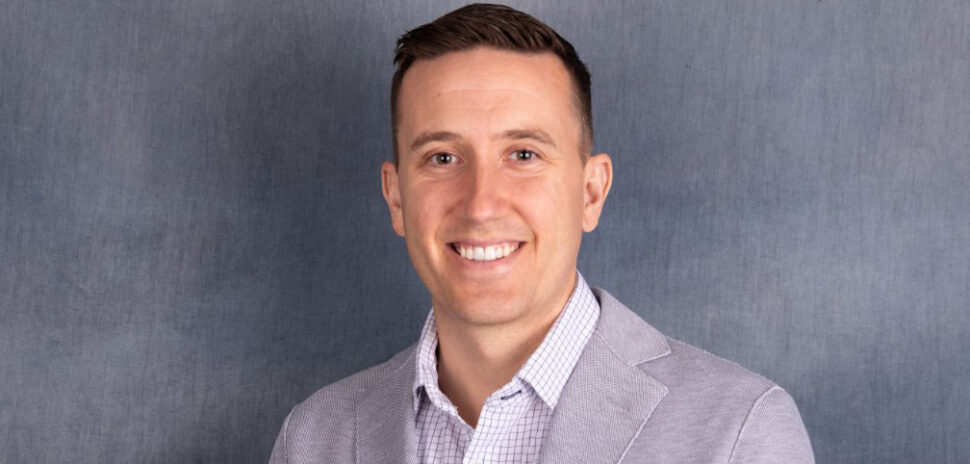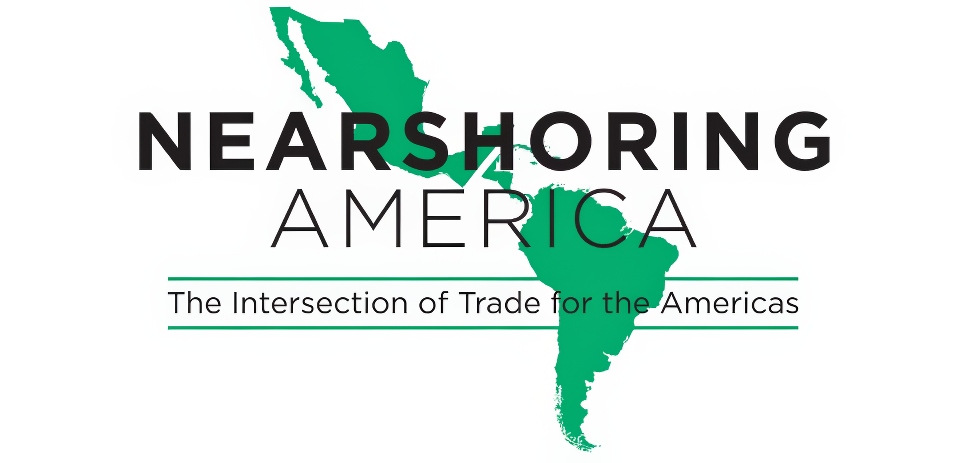In July 2012, two teams of the world’s leading scientists discovered the Higgs boson (also known as the God Particle), a manifestation of the field that all particles interact with to acquire mass. The discovery of the Higgs boson—a particle so important that without it, life itself would not exist—has roots in North Texas. As part of a larger experiment known as ATLAS, researchers at the University of Texas Arlington’s Center for Excellence in High Energy Physics helped unearth it.
“The UTA team contributed to many aspects of the ATLAS experiment,” says Dr. Kaushik De, director of UT Arlington’s Center of Excellence in High Energy Physics. “We have contributed to detector technology, to supercomputing technology, to software expertise, to new techniques in data analysis.”
Fifteen of the authors on the published Higgs boson paper associated with the Nobel Prize came from UT Arlington.
The scientific breakthrough was the culmination of a 40-year effort and was awarded the 2013 Nobel Prize in Physics for “the theoretical discovery of a mechanism that contributes to our understanding of the origin of mass of subatomic particles.” Fifteen of the authors on the published Higgs boson paper associated with the Nobel Prize came from UT Arlington.
“The Higgs boson provides an explanation for why fundamental particles have mass,” De says. It is absolutely crucial to our understanding of the universe. It plays such an important role in nature that Dr. Leon Ledermen [a leading American experimental physicist] half jokingly called it the God particle.”
Today, researchers at UT Arlington are continuing to learn from the Higgs discovery in a pursuit to build a foundation for the school’s reputation as a powerhouse in particle physics; a field that can tell humanity where it has been, and, perhaps more importantly, where it can go.
“Understanding nature at its most fundamental level is the ultimate frontier in human knowledge and understanding of existence,” says UT Arlington associate professor of physics Dr. Amir Farbin.
ATLAS’ Role in Discovery of the Higgs Boson
Physicists at UT Arlington conceived and helped build ATLAS, one of seven particle detector experiments constructed at the Large Hadron Collider (LHC), and created data analysis technologies for studying new particles like the Higgs. They also led software development for PanDA, a workload management system that connects hundreds of supercomputing centers working on ATLAS across the world. All of these contributions were instrumental to the Higgs’ discovery.
“Parts of ATLAS were built at UTA and shipped to European Organization for Nuclear Research (CERN),” De says. “The data from the experiment travels from CERN over high-speed networks and gets analyzed at the supercomputing center at UTA, and at hundreds of other supercomputing centers.”
Overseen by CERN, the LHC spans17 miles beneath the France-Switzerland border, making it the largest and most powerful particle accelerator in the world. Millions of times a second, the LHC creates speed of light collisions that produce data, which allows scientists to uncover major life mysteries. However, “most of this data is known phenomena,” says Dr. Farbin, who develops the software physicists use to analyze data from CERN.
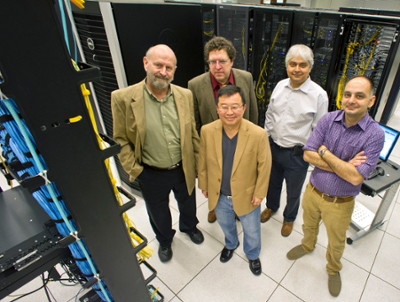
Members of the UT Arlington high energy physics group are: (clockwise from the left) Professors Andrew White, Andrew Brandt, Kaushik De, Associate Professor Amir Farbin, and Professor Jaehoon Yu. Photo courtesy UT Arlington.
Among the software Farbin has designed are the data formats that physicists use to weed out the data that isn’t interesting. This allows scientists to uncover needle-in-a-haystack types of data—diamonds in the rough that could lead to groundbreaking discoveries.
“Analysts start with a few percent of the about 1,000 events per second that we record,” says Farbin, who ran the group that wrote the software. “The rest of the work is further weeding down this data to find the handful of collision events that serve as definitive proof of the existence of the specific particle or phenomena of interest to a specific group of physicists.”
Currently, 25 researchers from UT Arlington support ATLAS, dividing their time between Dallas-Fort Worth and Geneva, Switzerland, as they seek to uncover new findings about why life exists and the potential it has going forward.
“We have been involved in all aspects of the ATLAS experiment for almost 20 years,” De says.
Leading the Next Wave for Research
In their work with ATLAS, researchers at UT Arlington’s Center for Excellence in High Energy Physics opened the doors to one of the world’s most important mysteries. But for them, the Higgs’ discovery was just the beginning.
“If we do not continue to search for answers to the most basic questions that nature poses to us, then the flow of information that has fueled major sectors of our economy for over a hundred years will dry up with many negative consequences for human society,” says UT Arlington Professor Dr. Andrew White. “It is in human nature to keep asking questions, and we should always continue to do so.”
White is continuing that search by leading the design and implementation for a proposed International Linear Collider (ILC), another example of UT Arlington’s growing leadership in the field.
“We are at the frontier of knowledge and technology—who knows what lies at the other side of the door?” De says.
The proposed ILC would span 19 miles, and aim to create more precise measure than the current LHC. With construction beginning as early as 2019, the ILC is set to dive even deeper into the Higgs. Scientists believe the ILC could also help further investigations into dark matter, dark energy, and the discovery of new particles.
“The presence of dark matter, the problem of stabilizing the mass of the Higgs, as well as the discovery of any new particles, strongly point to the existence of new physics,” says White, who also serves as spokesman for one of the two detectors that will be based at the ILC.
Such developments have potential for real-life applications far beyond scientific theories and discussions between academics. Current research into dark matter, for example, could ultimately help create electricity from nuclear force rather than fossil fuels.
“We are at the frontier of knowledge and technology—who knows what lies at the other side of the door?” De says.
Learn more about UT Arlington’s Center of Excellence in High Energy Physics, PanDA, and why this work is important to everyday life in our interview with the Center’s Director Dr. Kaushik De below. And keep reading for a video interview with UTA Physics Professor Jaehoon Yu, who organized a collaboration of 150 leading international physicists working to explain the origins of the universe at UTA earlier this year.
Tell us a little more about UT Arlington’s Center of Excellence in High Energy Physics and the work of its researchers.
The Center promotes collaborative research toward fundamental discoveries in physics. Currently, we have a dozen faculty members at UTA, along with dozens of other researchers, pursuing a common goal through many different initiatives. The work is carried out at accelerator facilities in the U.S. and Europe (maybe Japan in the future), and some other observatories worldwide.
Our research delves into the fundamental laws of nature, which are difficult and complex to explore. While the results of the research are available to everyone freely, the expertise we have developed is of great national and local importance. We are at the cutting edge of device technology and information technology. We have a large team of scientists from UTA stationed there (about half the people on this project from UTA are at CERN). We participate in the ATLAS experiment, the largest scientific instrument in the world.
Talk to us about PanDA, the workload management system that connects hundreds of supercomputing centers across the world.
After building the instrument, the ATLAS detector, the huge challenge was to analyze the data from the particle collisions. We have collected billions of complex multi-dimensional “pictures” (called events) so far. Each event could easily take hours for people to analyze by hand. Clearly, the only way to make this search and discovery possible was through advanced computational techniques. I led the creation of the PanDA software system, which runs at hundreds of supercomputing centers simultaneously, including UTA, to process the huge amount of experimental data. PanDA, and smooth computing operations, played a crucial role in discovering the Higgs boson.
For those of us who are pretty basic when it comes to physics, why is this work important to everyday life?
Fundamental knowledge is always important to humankind—it has fostered progress and innovation for many centuries. The pursuit of fundamental knowledge also brings practical benefits—in the long term and along the way. Our detectors and technologies always enter mainstream society, often decades later, as the World Wide Web, the internet, scanning machines, and much more.










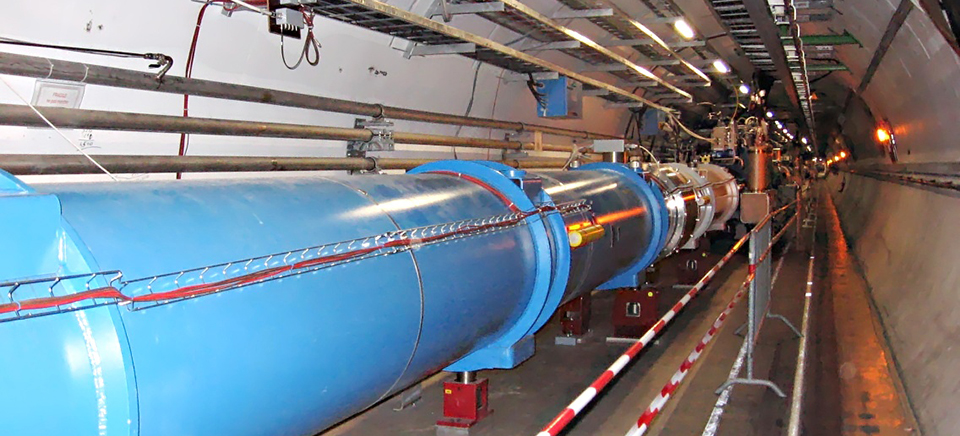

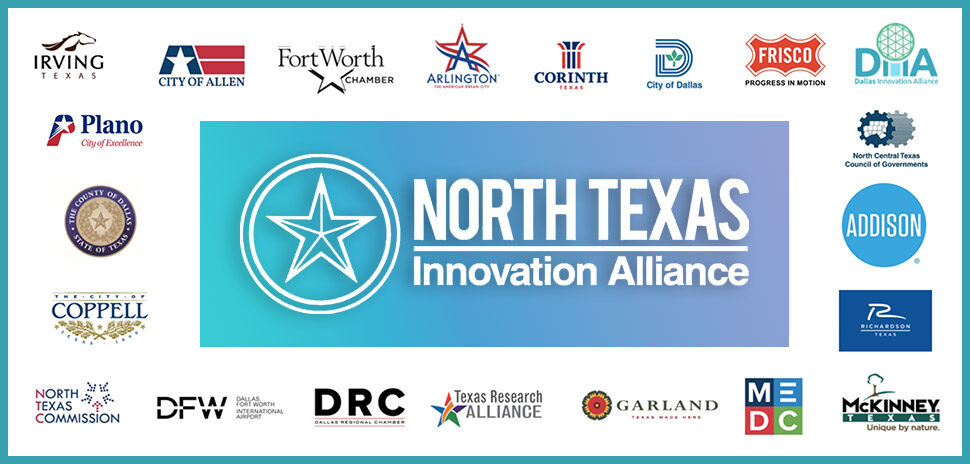
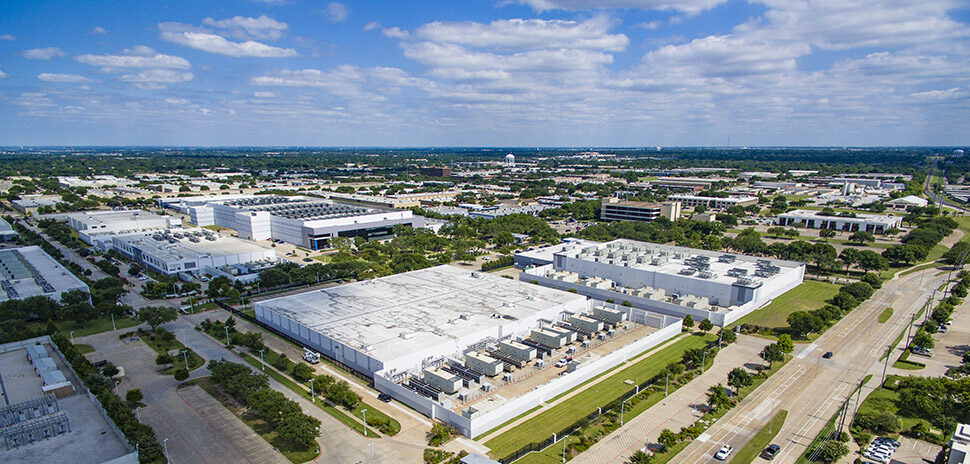
![Dr. Justin Lonon, vice chancellor of Dallas College, addresses the crowd at the recent Goldman Sachs 10,000 Small Businesses Dallas Graduation. [Photo: 10KSB]](https://s24806.pcdn.co/wp-content/uploads/2021/06/GoldmanSachs-10KSB-4992-970-970x464.jpg)
